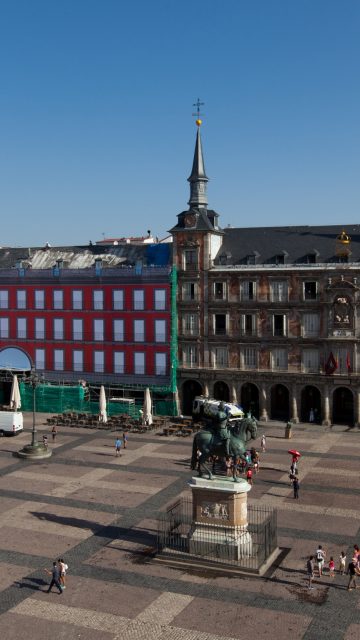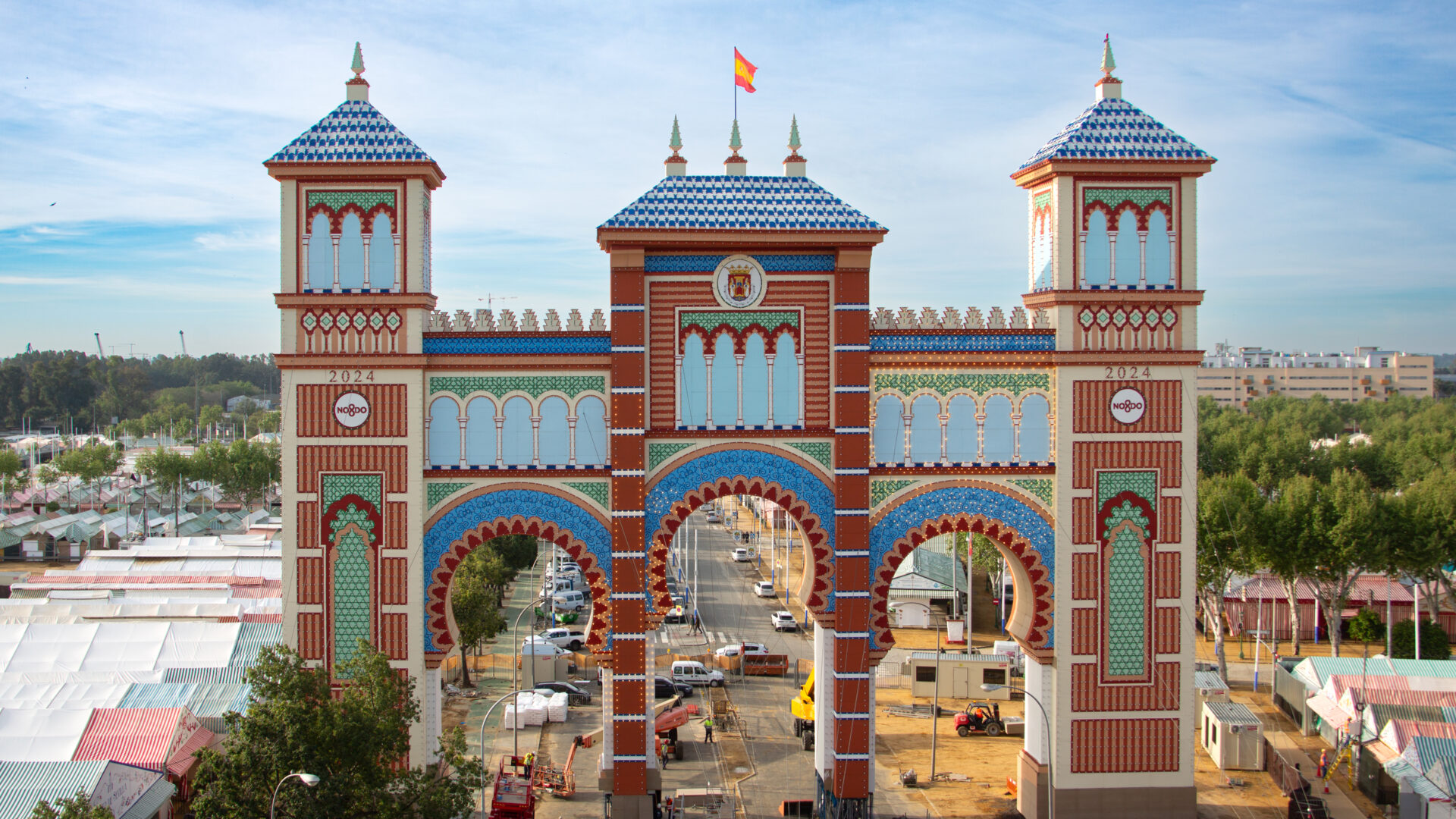

Seville (Spain)
-
Since
1968building the Portico
-
Professionals
41in the assembly
-
Parts
4.000connected
-
Tons
20Tof roof weight
Every spring, the Seville April Fair is inaugurated with the turning on of the façade lights. This structure, with a metal base and a design that changes annually, is the gateway to this emblematic celebration and a symbol of one of the most important weeks of the year for the Andalusian city. Ferrovial is one of the companies that contributes to making one of Spain’s best-known and best-loved festivals a reality.
In 1896, the engineer Dionisio Pérez Tobías designed a metallic structure that was installed at the intersection of the Real de la Feria and soon became a symbol as the entrance to the Seville Fair. Decades later, the structure was dismantled, but popular desire and what had by then become tradition led to the installation of temporary entrance gates in each subsequent edition of the fair.
From 1968 to the present day, these entrance gates have been built by Ferrovial Agroman and, subsequently, by Ferrovial Construcción. Today, the entrances measure some 45 meters high and 50 meters long and are made up of a complex network of more than 4,000 pieces of different materials.
Entrance gates over the years
2008
2009
2010
2011
2012
2013
2014
Throughout the shared history of the April Fair and Ferrovial, the entrance gates have taken on several different personalities. Every year, the City Council of Seville organizes a contest to choose the design for the following spring. This contest often has a specific theme and seeks to reflect the character of an emblematic building or recall a historical event. This has given rise to memorable gates such as that of 2010, which celebrated the centenary of the first flight over Seville, or that of 1993, inspired by the old Pedro Roldán warehouses in the city.
At other times, the theme is open. In these cases, the designs tend to maintain the spirit that always accompanies the fair: bright and cheerful colors to represent the flowers that bloom anew with the arrival of spring.
This is how the April’s Fair Portico is built today:
- The construction of the entrance gate starts in early December. Over the course of two months, a large three-dimensional tubular structure is erected, made up of metal parts assembled together. The key to this construction lies in the tube coupler, a part weighing just one kilogram and with a sliding resistance capacity of 1,000 kilograms. Thousands of linear meters of pipe, tens of thousands of bolts, and several tensioning cables are also involved.
- In early February, the roofs, which have a total weight of about 20 tons, are hoisted. Occasionally, this phase has added complications: in 2010, for example, the structure featured a replica of the Bleriot XI, the first aircraft to fly over Seville. The 3,500-kilogram structure hung from the upper keystone of the central arch for the entire duration of the fair, after being hoisted by means of a very complicated maneuver.
- Once the metal structure is built, it is time to install its cladding. At Ferrovial we make a 1:1 scale cut of the gateway to shape the wooden panels that are assembled with special couplers on the base structure. These panels are the stars of the gateway structure, painted by hand in harmony with each year’s design. This fits perfectly with the traditional character of the fair and seeks to maintain and dignify the craft trades.
- At the same time, a company contracted by Seville City Council installs some 25,000 LED bulbs in the panels. Its lighting kicks off the week of the fair and also marks the start of the countdown to choose the design of the following year’s gateway.
Ferrovial’s added value
The gateways and booths that brightened up the fairs of the first half of the 20th century were based on wood. However, a fire in 1964 destroyed more than a hundred booths, claimed the life of one worker and left many injured. From that moment on, the Seville City Council decided that the structures would be based on metal.
With this decision, Ferrovial Agroman’s history at the April Fair begins. The company was responsible for the design and assembly of these first metal structures and, in the same decade, patented a T-shaped part to make the connections between the tubes. Today, this part has been replaced by another tube coupler that is very common in scaffolding systems.
In recent decades, Ferrovial has left its mark at the fair. It has increased safety in the construction with the incorporation of safety nets and trays around the perimeter of the structure. The viability of integrating a fire protection mechanism in the gate facade itself is also currently being studied.
Every year, the Seville Fair welcomes millions of visitors. In 2023, more than two million people passed through the entrance gate to access the fairgrounds and welcome spring with a week of celebration that also bears the mark of Ferrovial.
Projects in Spain
SEE MORE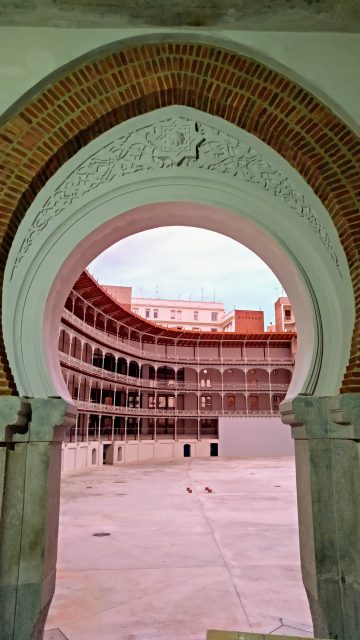
Renovation of the “Frontón Beti…
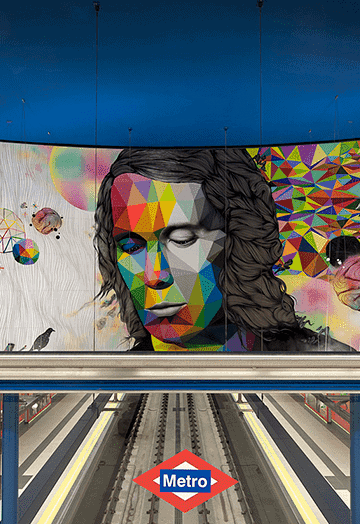
Drainage Cells for Eco Management in …
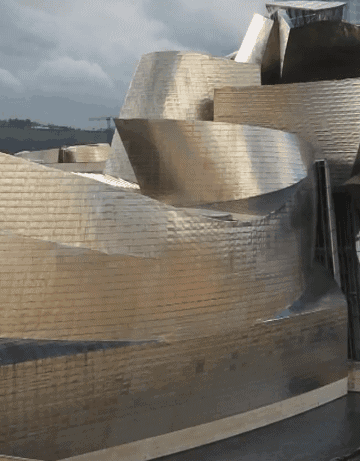
Guggenheim Museum
